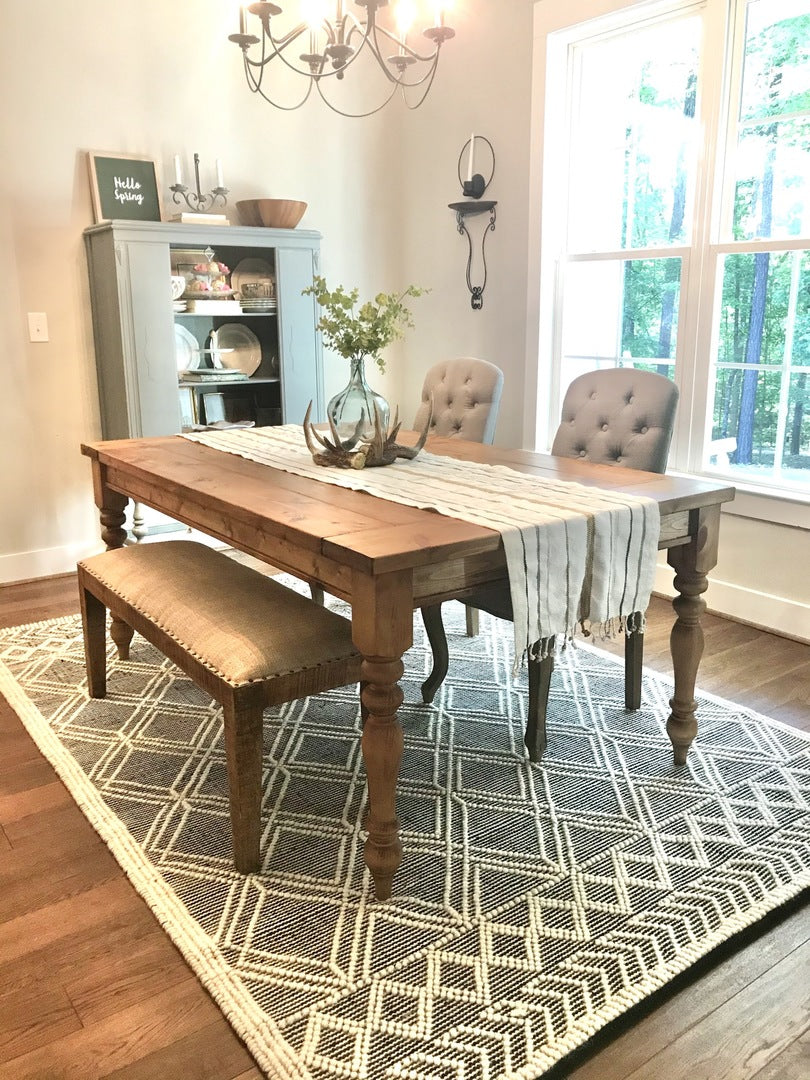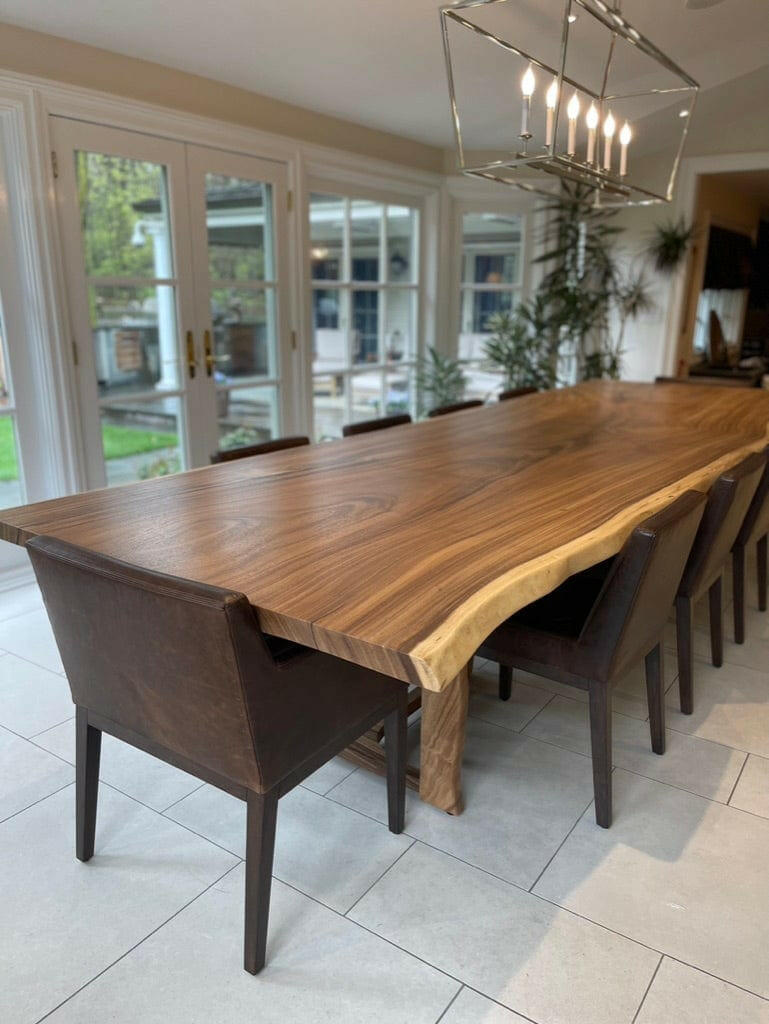Top Trends in Dining Room Table Legs to Boost Your Eating Area
Top Trends in Dining Room Table Legs to Boost Your Eating Area
Blog Article
Picking the Perfect Table: What Styles Work Best for Your Home?
Choosing the ideal dining table for your home can be a nuanced process that balances looks and capability. To browse these selections properly and discover a table that absolutely matches your home, consider the adhering to aspects in information.
Examining Your Space
Examining the measurements and format of your eating area is an essential primary step in choosing the excellent table. Begin by determining the size and size of the area, representing doorways, windows, and various other building functions that can influence table positioning. This makes sure that your table not only fits however likewise permits for comfy activity around it.
Take into consideration the number of individuals you typically captivate. A table needs to accommodate your home's everyday requirements while providing sufficient adaptability for periodic guests. Generally of thumb, assign a minimum of 24 inches of table size each to make sure a comfy dining experience.
It's additionally necessary to preserve ideal clearance around the table. Preferably, there ought to go to the very least 36 inches in between the table side and walls or other furnishings, making it possible for easy accessibility and movement. For spaces where chairs with arms or extra storage devices like buffets are involved, boosting this clearance to 48 inches is recommended.
Illumination and atmosphere play significant roles too. Ensure that your dining table lines up with existing illumination fixtures or prepare for ample illumination remedies. This extensive spatial analysis warranties that your table not just fits literally yet additionally balances with your space's general capability and aesthetic.
Popular Table Styles

Standard table frequently include luxuriant details, bent legs, and abundant wood coatings, evoking a feeling of timeless elegance. They are perfect for homes with timeless decor or those looking to add a touch of class to their dining area.
Modern eating tables prioritize simplicity and tidy lines, usually including products like glass and steel. These tables are excellent for modern spaces, providing a sleek and clean appearance that matches minimalist style approaches.
Rustic table, on the other hand, emphasize all-natural materials and a handmade appearance - dining room table legs. They commonly feature reclaimed timber and a distressed surface, producing a cozy and inviting ambience. These tables function well in farmhouse-style homes or those seeking a comfortable, organic feeling
Industrial dining tables incorporate resources such as metal and timber, frequently showcasing a practical visual. This design is well-suited for loft spaces or metropolitan areas, including a touch of tough beauty and toughness to the dining experience.
Each design supplies distinctive benefits, making it important to pick one that lines up with your home's total layout and your personal preferences.
Material Options
When picking an eating table, the selection of product plays a critical role in figuring out both the table's like it visual appeals and performance. Timber, steel, glass, and composite products each offer unique benefits and difficulties, making it essential to align the product with your home's design and way of life needs.
Timber is an ageless and flexible alternative, offered in varieties such as oak, walnut, and mahogany. Recognized for its longevity and warmth, wood matches both traditional and modern insides. It calls for routine maintenance to protect against scratches and bending.
Metal tables, usually crafted from stainless-steel, aluminum, or wrought iron, are praised for their modern-day appeal and effectiveness. They are specifically fit for industrial or minimal settings but can be susceptible to dents and might really feel cold to the touch.
Glass table bring an air of style and openness, suitable for smaller spaces as they produce an illusion of even more room. While very easy to clean, glass can be prone to spots and needs mindful dealing with to avoid chips and fractures.
Composite materials, such as MDF and plywood, deal affordable my latest blog post and personalized solutions, though they may do not have the longevity of natural materials. Picking the appropriate material guarantees your table is both a useful possession and an aesthetic pleasure.
Shape and Size Factors To Consider
After determining the ideal product for your eating table, the following factor to consider is picking the best sizes and shape to match your area. The shape of the table significantly affects the area's visual and capability. Rectangle-shaped tables, the most usual shape, are perfect for bigger areas and can accommodate a greater variety of visitors. They additionally permit for a much more official dining experience. Conversely, round tables cultivate a sense of affection and are superb for smaller eating areas, motivating conversation by removing corners and making everyone feel just as included.
As a guideline of thumb, allot at least 24 inches of table size per person to ensure comfy eating. Additionally, take into consideration the table's clearance space: there should be at the very least 36 inches between the table side and the wall surfaces or various other furnishings. Prolonging tables offer versatility if you regularly hold bigger gatherings, offering additional seats when needed without inhabiting added area daily.
Matching Your Design
Choosing an eating table that integrates with your existing design is crucial in producing a cohesive and welcoming area. Begin by examining your current indoor design style, whether it be contemporary, conventional, rustic, or diverse. The table need to complement the total visual, not take on it. As an example, a streamlined, minimalist table with tidy lines is perfect for a modern home, while a vintage, ornate table suits a much more traditional setup.
Shade and product are just as substantial. If your decoration features warm tones and all-natural materials, consider a wood table to improve the organic feeling. Conversely, a glass or metal table might be better suited in a space dominated by amazing colors and industrial aspects. Take notice of the surface, as it needs to mirror other furnishings and components to keep harmony.
Appearance plays a critical function. A rough-hewn, recovered timber table can try this out add personality to a rustic space, while a refined marble surface area can raise a glamorous eating location. Lastly, think about the scale and percentage of the table in connection to the area size and existing furnishings. A well-matched eating table not just boosts aesthetic allure yet also enhances the total eating experience.

Final Thought
Selecting the optimal dining table demands cautious consideration of area, style, materials, shape, and dimension. Typical tables complement classic insides with abundant timber coatings, while contemporary tables match modern setups through glass and steel.
Report this page